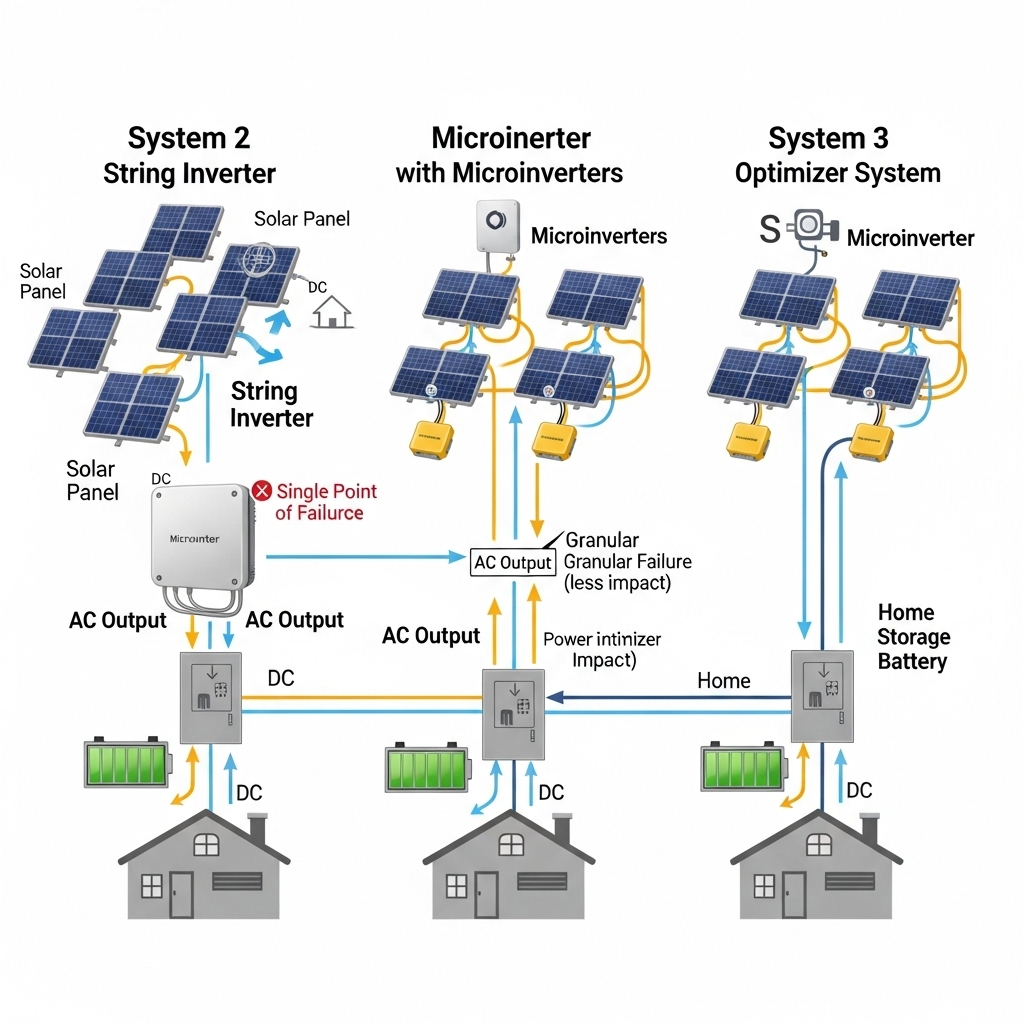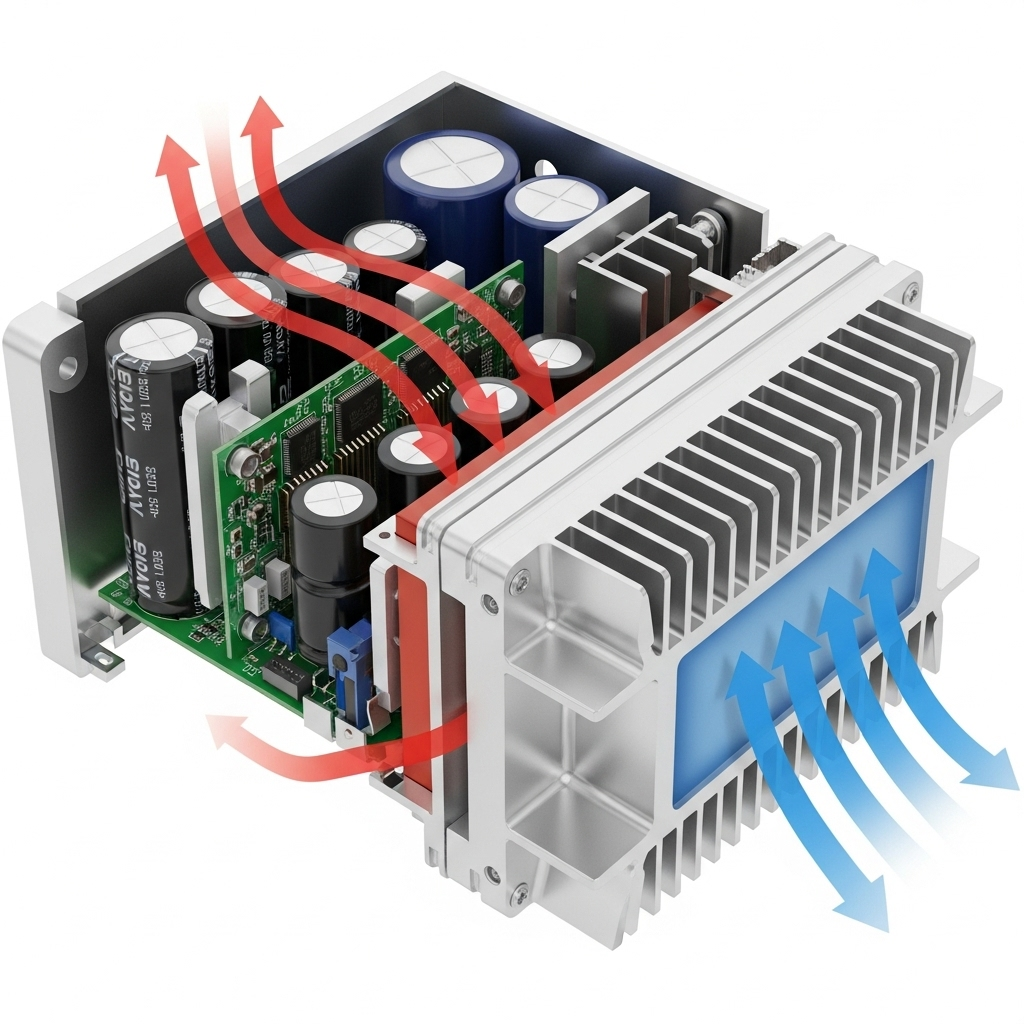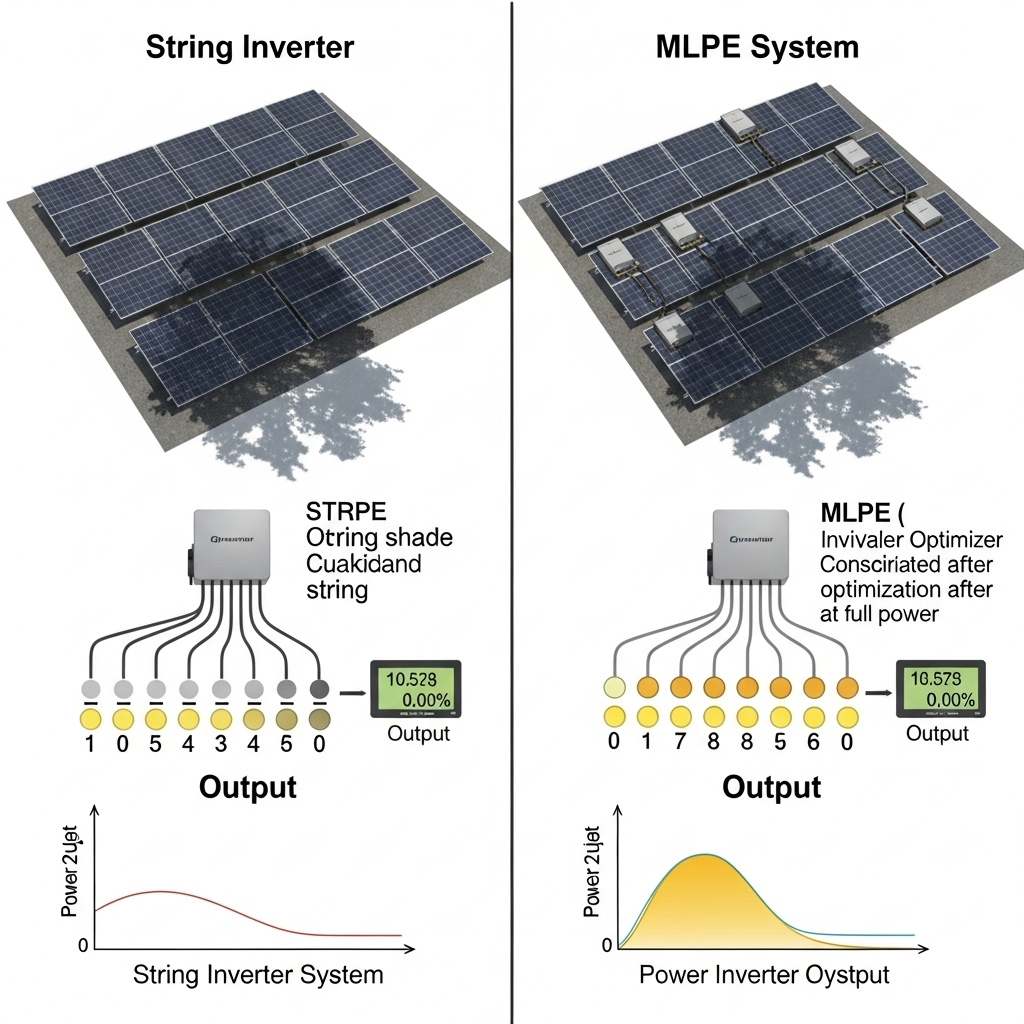Integrating an Energy Storage System (ESS) with your solar panels is a significant step toward energy independence. It provides backup power during outages and helps manage energy costs. But the resilience of your entire system often depends on a component that sits between the panels and the battery: the inverter. The choice between string inverters, microinverters, or power optimizers directly influences how reliably your system performs, especially when you need it most.
Different inverter technologies handle solar production in fundamentally different ways. This comparison clarifies how each approach affects the fault tolerance, charging efficiency, and overall resilience of your solar-plus-storage setup, ensuring you build a system that is robust and dependable.
Understanding Inverter Topologies and Their Core Function
Before assessing resilience, it's important to grasp how each inverter type works. The architecture of your system dictates its strengths and weaknesses, particularly when paired with an ESS.
Traditional String Inverters: The Centralized Approach
String inverters are a long-standing technology where solar panels are wired together in a series, or a 'string'. The combined DC electricity from the entire string flows to a single, centralized inverter that converts it into usable AC power for your home or to charge your battery. This design is straightforward and cost-effective for ideal conditions. However, the performance of the entire string is limited by the output of the lowest-performing panel. If one panel is shaded, soiled, or fails, the production of all other panels in that string is reduced, directly impacting the energy available to charge your ESS.
Microinverters: The Distributed Solution
Microinverters take a completely decentralized approach. A small, individual inverter is installed on the back of every single solar panel. Each microinverter converts DC power to AC power right at the source. This means every panel operates independently. A problem with one panel has no impact on the others. This module-level independence eliminates the 'single point of failure' risk associated with string inverters and maximizes energy harvest, providing a more consistent flow of power for your storage system.
Power Optimizers: A Hybrid Model
Power optimizers offer a middle ground. Like microinverters, a small electronic device—an optimizer—is attached to each solar panel. These optimizers condition the DC electricity and maximize the energy output of each panel individually. However, instead of converting the power to AC, they send the optimized DC power to a central string inverter for final conversion. This hybrid system mitigates production losses from panel mismatch while still using a central inverter. Research from the U.S. Department of Energy highlights that this technology can increase production by 5% to 15% in some cases, as detailed in the EERE Success Story on Power Optimization Technology.
The Critical Link: How Inverter Choice Impacts ESS Resilience
Resilience is the ability of your system to withstand and recover from disruptions, whether it's a grid outage or a component issue. The inverter topology is central to this capability.

Fault Tolerance and System Uptime
A key measure of resilience is how the system handles a fault. With a string inverter, the inverter itself is a single point of failure. If it goes down, your entire solar array stops producing power, and you can no longer charge your battery from the sun. In contrast, systems with microinverters have no such single point of failure at the array level. If one microinverter fails, you only lose the production from that one panel; the rest of the system continues operating normally. Power optimizer systems still have a central inverter, but the optimizers provide panel-level monitoring, making it easier to diagnose and isolate problems without shutting down the entire system.
Energy Yield Consistency for Predictable Charging
An ESS is most effective when it can be charged reliably. Module-Level Power Electronics (MLPE)—a term for both microinverters and power optimizers—excel at providing consistent energy output, even with partial shading or panels facing different directions. Because each panel is managed independently, the system harvests the maximum possible energy throughout the day. This stable and predictable energy flow is crucial for effective battery charging, ensuring your ESS is full when needed. Consistent energy production is vital for optimizing battery health and lifespan, a concept detailed in this ultimate reference on solar storage performance.
System Scalability and Future-Proofing
Your energy needs may change over time. MLPE systems are inherently more scalable. You can easily add one or more panels to a microinverter or optimizer system without worrying about redesigning strings. Expanding a string inverter system is more complex and may require a new inverter if the existing one cannot handle the additional capacity. This flexibility makes MLPE a more resilient choice for future expansion, allowing your energy system to grow with your needs.
Technical Deep Dive: Coupling, Efficiency, and Safety
The technical interaction between your inverter and ESS plays a significant role in overall system resilience and performance.
AC vs. DC Coupling with Your ESS
How your solar array connects to your battery is known as 'coupling'.
- DC-Coupled: Solar power flows from the panels to a charge controller, then to the battery, and finally to a hybrid inverter for use in the home. This is common for string and optimizer systems and is generally more efficient for charging a battery directly from solar, as the power stays in DC form.
- AC-Coupled: Solar power is converted to AC at the panel (by microinverters) or a solar inverter, and then converted back to DC to charge the battery. This method is standard for microinverters and offers greater flexibility, especially when retrofitting a battery to an existing solar installation.
A Comparative Table for ESS Resilience
| Feature | String Inverter | Microinverters | Power Optimizers |
|---|---|---|---|
| Single Point of Failure | High (Central Inverter) | Low (Distributed) | Medium (Central Inverter) |
| Shading/Soiling Tolerance | Low | High | High |
| System Uptime | Lower | Highest | High |
| Charging Consistency | Variable | High | High |
| Scalability | Difficult | Easy | Easy |
| Inherent Rapid Shutdown | No (Requires Add-on) | Yes | Yes |
Rapid Shutdown and Safety Considerations
Modern safety codes require a rapid shutdown function, which de-energizes the solar array quickly for firefighter safety. Microinverters and power optimizers have this capability built-in at each panel. String inverters require additional components to meet these standards. This inherent safety feature of MLPE not only ensures compliance but also adds a layer of resilience by protecting the integrity of your entire home energy system. The importance of proper technical rules for connecting distributed energy resources is a point also made in IEA analysis on integrating renewables into the grid.
Making the Right Choice for Your Energy Independence
When building a solar-plus-storage system designed for resilience, the inverter technology is a critical decision. For maximum fault tolerance, consistent energy production, and future flexibility, MLPE systems—both microinverters and power optimizers—present a compelling advantage. Their distributed architecture ensures that a single panel issue does not compromise your ability to generate power and charge your battery.
While traditional string inverters remain a viable option for simple, unshaded rooftops where budget is the primary driver, they carry inherent risks for those prioritizing energy security. Ultimately, the best choice aligns with your specific site conditions, budget, and how much you value uninterrupted power.
Frequently Asked Questions
Do microinverters work well with batteries?
Yes, they work very well through a method called AC coupling. The AC power from the microinverters is used to charge the battery via a battery inverter or a multi-mode inverter designed for storage. This setup is highly flexible and efficient for many home energy storage applications.
Is a string inverter with power optimizers more resilient than a standard string inverter?
Absolutely. While it still has a central inverter, the power optimizers at each panel prevent issues like shading or panel failure from affecting the entire system's output. This ensures more consistent power flows to your energy storage system, boosting resilience significantly.
If my string inverter fails, will my battery still provide power?
It depends on the system configuration. If you have a hybrid inverter that manages both solar and the battery, its failure will likely take down both systems. In an AC-coupled system, the battery could potentially provide power from its stored energy, but it could not be recharged by the solar array until the solar inverter is fixed. The central inverter remains a critical point of failure.
Which system is better for preparing for long-term power outages?
Systems with module-level power electronics (microinverters or power optimizers) generally offer superior resilience for long-term outages. Their ability to maximize energy harvest from every panel even in challenging conditions and their lack of a single point of failure at the array level mean you can reliably charge your battery day after day.





Leave a comment
All comments are moderated before being published.
This site is protected by hCaptcha and the hCaptcha Privacy Policy and Terms of Service apply.